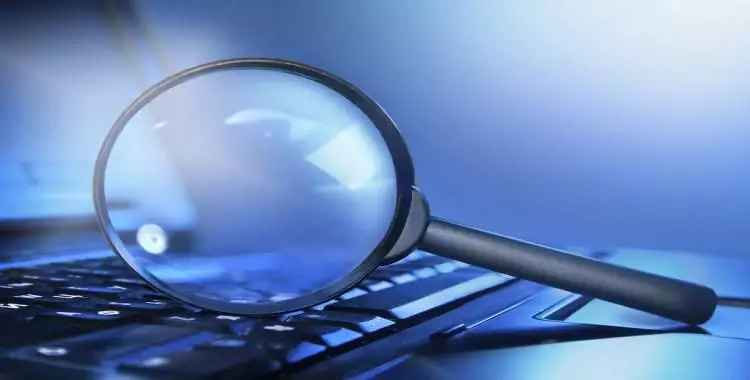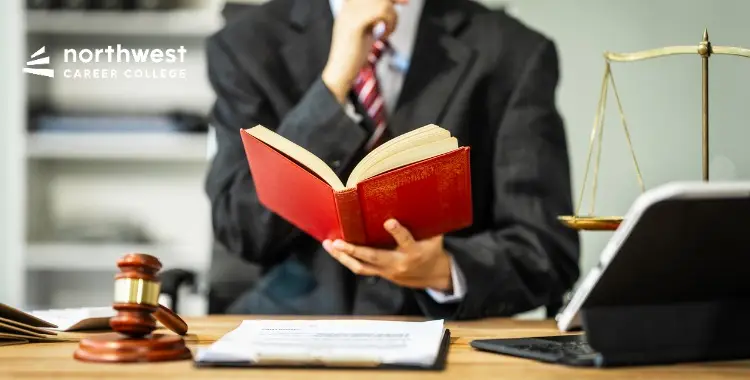How E-Discovery is Changing the Role of Paralegals
- Paralegal Studies
- March 12, 2024
- 4.0k views
- 5 min read

Linchpin is defined as follows:
Something [someone] that holds the various elements of a complicated structure together.
This truly defines the role of a paralegal in today’s ever changing legal field.
Often, what comes to mind when you think of the role of a paralegal are things like drafting documents, scheduling meetings, and taking notes. But that’s so 20th century, and the role of paralegals is rapidly evolving, with traditional responsibilities being augmented or even replaced by new focus areas and opportunities for advancement, thanks in large part to the rise of E-Discovery.
More and more, in-house e-discovery teams require a dedicated project manager to coordinate operations between the team members with more specialized roles, namely attorneys and IT experts. Often this role is filled by paralegals, many of whom bring the best of both worlds to the table: a background in law and legal procedure along with tech savviness, making them perfect for the job.
The Changing Role of Paralegals in E-Discovery
Two corporate paralegals who were able to leverage their focus on e-discovery into an expanded role are Tara Jones, lead paralegal for AOL, and Ellen Kuplic, discovery coordinator for BP Legal, whose insights are highlighted in Exterro’s white paper, “Advancing Your Paralegal Career with E-Discovery.”
Defining Roles and Responsibilities:
E-discovery projects rely on contributions from an array of professionals who have other day-to-day responsibilities so it’s a must that roles and responsibilities are clearly and carefully defined, or work simply will not get done. Paralegals function as the glue that binds the team together.
There are various ways companies handle the role breakdown. Some opt for more specialization, where specific members of a given team, whether it’s legal, IT, or a particular business unit, are responsible for e-discovery activities.
Other companies take a broader approach and expect a variety of people from each department to be proficient in e-discovery and prepared to handle requests as needed. There isn’t one right answer as long as the system in place supports workload demands and the roles and expectations are strategically defined.
Documenting the Process:
Having a well-documented process helps ensure that individual tasks get done correctly and efficiently, and it should be process-specific and highly detailed. Think of it as a playbook of sorts. Keep in mind, people switch roles, leave the company, and systems are constantly changing; the playbook helps to ensure that when people are thrust into new roles or forced to engage with new technologies they at least have some authoritative resource to help guide the way.
But the playbook can’t be static. Make it a priority to review and update it on a regular basis. Seek feedback from the larger team on what works and what doesn’t, or if any process changes have been made on the fly that have yet to be reflected in the playbook. The same goes for any new systems that have been incorporated into the process, such as a legal hold or collection tool. As a rule, any time a new technology is brought in, you should review the playbook and make updates as needed.
6 Tips for Successfully Adopting E-Discovery Technology
Incorporating Technology into the Process:
Technology can often repair a broken process, but it can also make a situation worse or create a new set of problems if it’s not deployed thoughtfully. When implementing new technology, ask yourself:
How have roles and responsibilities changed?
Are certain steps under the old process now rendered obsolete?
Can previous isolated tasks can be consolidated into one action?
How much user training is needed?
It’s very important that all of this is considered proactively, as a poorly planned roll-out can very easily turn people against a new technology and result in your team relying on workarounds that threaten process cohesion.
Conclusion:
As companies increasingly look to bring E-Discovery in-house, the opportunity for paralegals to assume a position of leadership in the legal department is only expanding. But with an expanded role comes more challenges and greater responsibility. By focusing on process consistency and technology adoption, you can become the linchpin when it comes to E-Discovery, both for your team and for the larger enterprise.
Northwest’s Paralegal Studies Program offers students a well-rounded educational experience necessary for their absolute success in our program and in the legal field. Our students gain experience in drafting various legal pleadings, correspondence and other documents, coupled with the experience in legal research and technology; whereby, students continue to develop their writing, research and technology skills utilizing such tools as WestlawNext, Clark County Courts, Odyssey, Clio, and other such programs.
Upon completion of their course studies, students venture on to their 300-hour externship with a law firm they may improve their skills and gain experience on actual cases and utilizing various programs, under the direct supervision of an attorney. Students then earn an Associate Degree in Paralegal Studies from Northwest Career College.
Sources:
http://www.jdsupra.com/legalnews/becoming-the-linchpin-how-e-discovery-62827/
http://www.dictionary.com/browse/linchpin



